Kiso valley to Kairakuen: The rest of my Japan trip

Life without work deadlines and schedule is blissful. So, I have been taking my own sweet time in writing about the spring 2019 trip to Japan. With half the journey written up and my energy for writing about travel somewhat sagging now, it is time to wrap up the rest. It is like the ending of an overly long drama series where the plot is suddenly speeded up in the last episode. With more time stuck at home under the evil spell of COVID-19, there is no excuse for procrastination.
I dutifully sat down and browsed through the hundreds of photographs we took during the Japan trip. Our brain is a time machine. A holiday snapshot can bring us back to the moment, together with all that our senses registered then. Some pictures just smell of pristine spring air. Some invoke the warmth of a sudden burst of sunlight on my skin in the frigid cold. Some remind me of the expansive feeling in looking at the dazzling patterns of fragile cherry tree flowers.
The last half of the journey began in Kiso Valley, about 2 hours train ride from Nagoya. We walked from the ancient town of Magome to Tsumago, then return to Nagoya. From there it was a long journey to Sendai in the North, passing through Tokyo. Sendai was the base from which we visited a temple on the mountain top in Yamadera and then Matsuhima Bay, supposedly one of 3 most scenic views in Japan. Then it was back to Tokyo for some cherry blossom viewing and day trips to Hitachi Seaside Park and the Kairakuen Gardens in Mito.
Kiso Valley
During the Edo period, one of the two routes connecting Kyoto to Tokyo is the 500 km Nakasendo, which winds through Kiso valley along the Japanese Alps. Rest stops called “post towns” sprung up along the route, some of which are well preserved until today. Two of the well-known post towns are Magome and Tsumago. We started our moderately long walk (7.8 km) in Magome, a picturesque stretch of lonely shops, inns and houses, and ended in Tsumago.
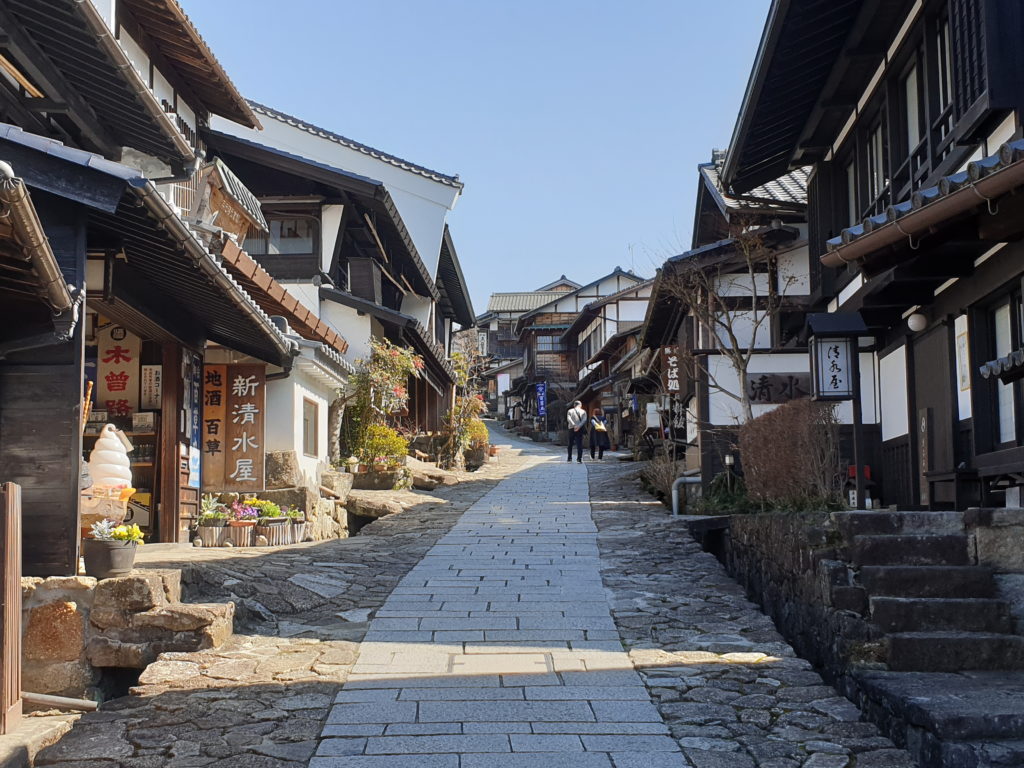
The sun was cooperative, keeping us warm and showing off the greens and browns of trees and grass of the sloppy terrain when we reached the outskirt of Magome. We found a good spot to munch on tangerines and snacks while enjoying the mountain view and breeze.
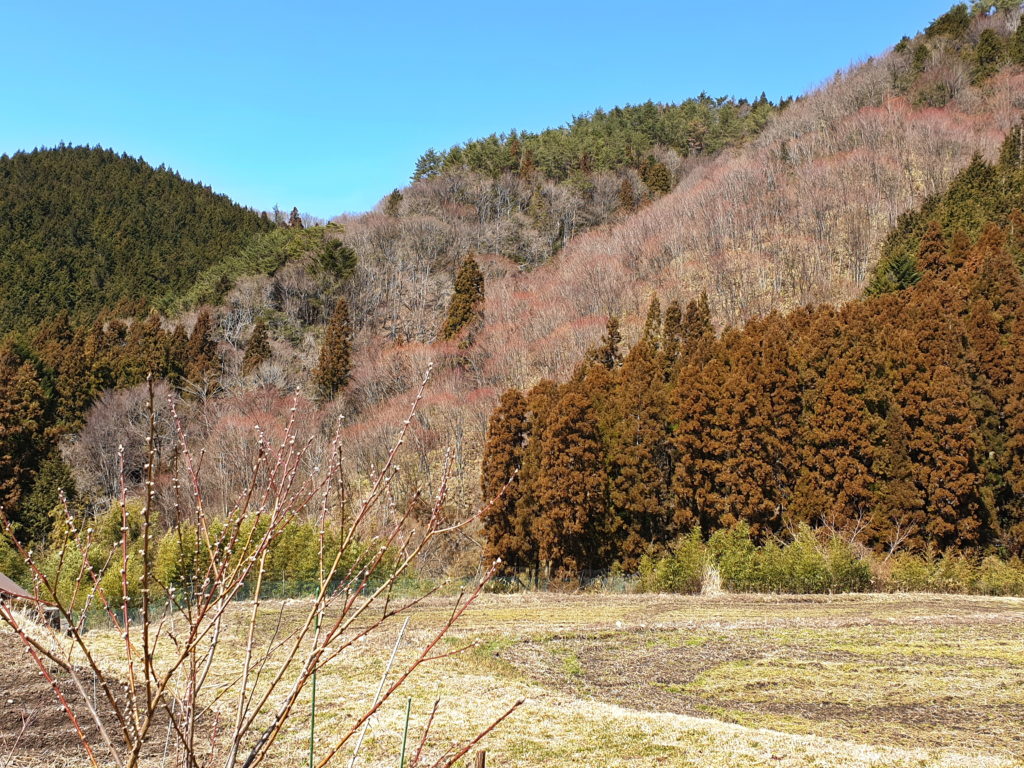
Most of the remaining route to Tsumago was not so scenic – mainly earthen paths with monotonous tall trees lining both sides.

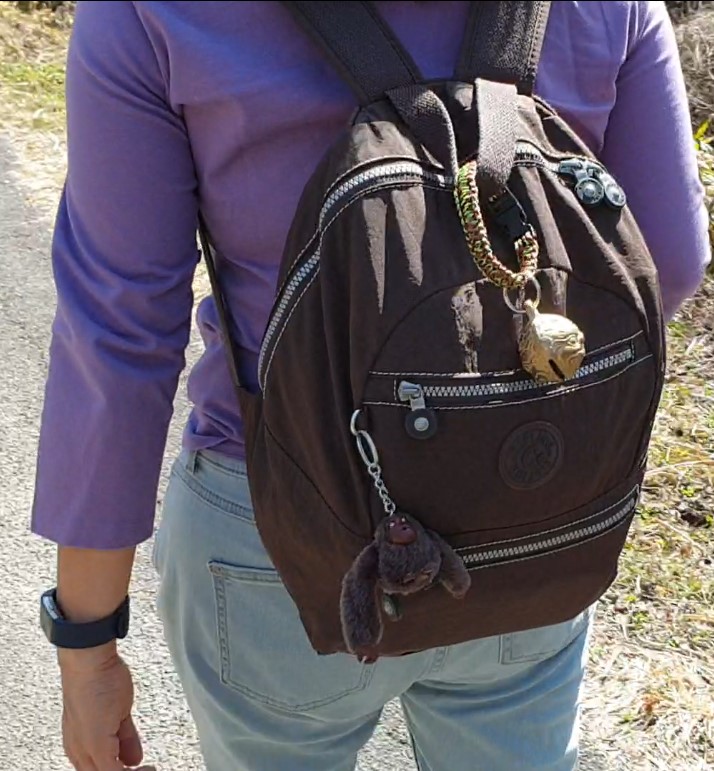
Dotted along the entire route are bells on poles for you to ring to scare away bears, which supposedly frequent these areas. We read about this before we came, so we bought a small bell at a shop in Magome to carry with us, ostensively as a souvenir, but mostly to allay our lurking fear of being attack by bears. After all, don’t bears go hunting for food in springtime after months of hibernating in winter? After a while of walking with the loud shaking bell hung on my wife’s backpack, we decided we really look ridiculous (and overly kiasu), so we buried it inside the bag, bear or no bear!
Lovely scenery opened up about three-quarter of the way into the walk. We found two waterfalls a short distance apart, one male (call odaki) and the other female (medaki) according to the signboards. I stared hard at each of them, trying to figure out the reason for the gender assignment. Perhaps the Medaki is gentler and prettier while the Odaki is heavier and rougher (stereotyping, I know), or it could be a simple designation of where each sex is to bathe. Maybe, there was a story behind it, probably involving some star-crossed lovers who can never meet even after they turn into waterfalls.
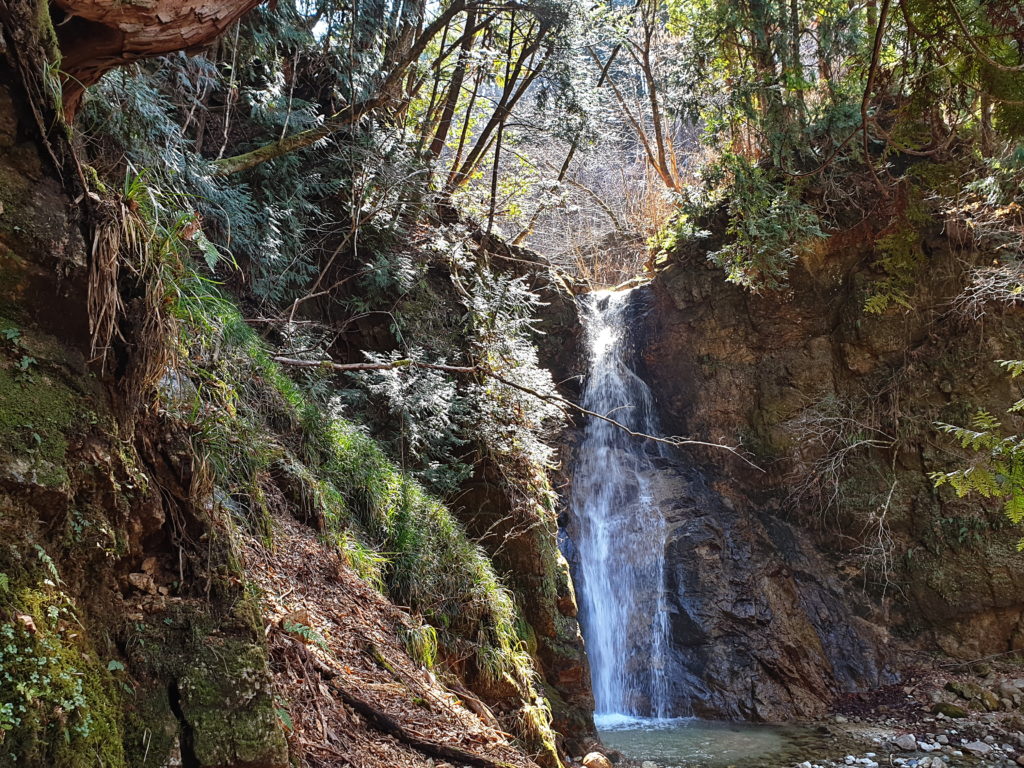
We reached Tsumago, which translates as “wife’s basket” after a pleasant walk from the waterfalls, passing through a hamlet or two and scattering of cherry trees in their pre-adolescent bloom. The slanting sunlight of the late afternoon cast a pleasant golden sheen on the rows of timber houses as we entered the town to catch the last bus back to the train station. Yet another quaint town to pass by with not much time to enjoy the rustic scene that must have been a busy waterhole a few centuries ago.
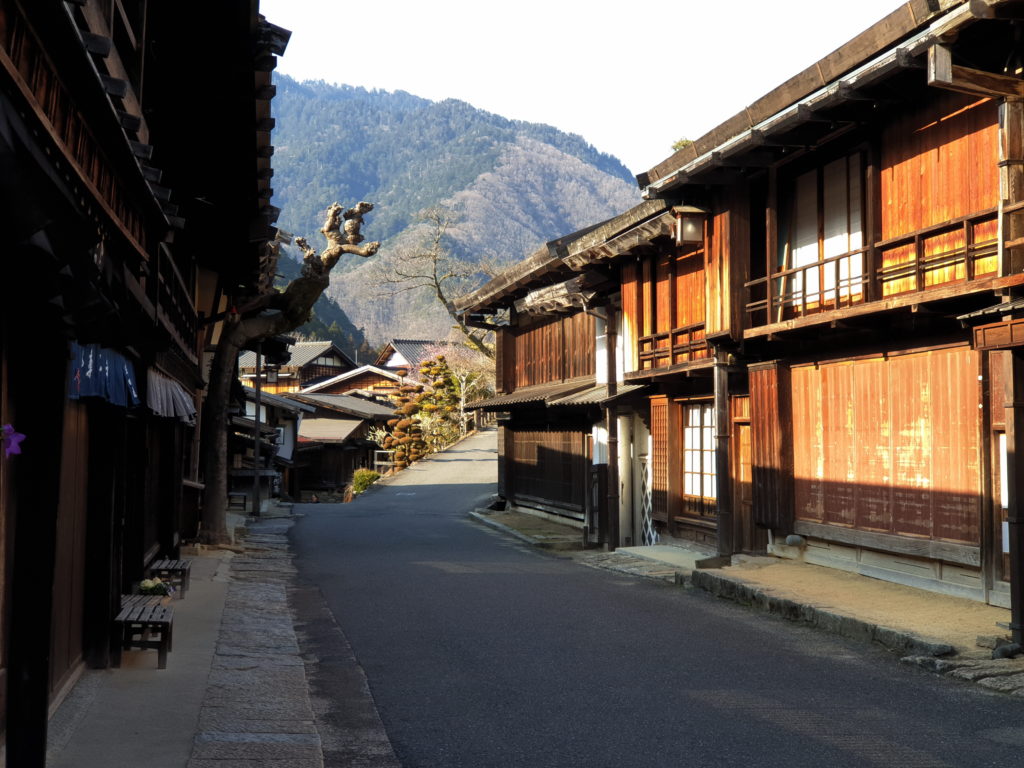
Sendai
The next day, we arrived in the northern city of Sendai, after nearly missing our train connection in Tokyo because we alighted on the wrong side of the platform. Sendai was the base for our short excursion to the mountain temple in Yamadera and the scenic town of Matsuhima. As we walked out of the station to the vast open plaza, I felt some tiny snowflakes landing on my face, but the sky seemed reluctant to let go of its fluffy hoard. It was only 2 days later that we experienced our first snowfall in Japan. To a person living in the tropics, snow is always beautiful. I first encountered this magic about 40 years ago in London, just outside the Foyle bookshop. It is etched in my memory forever.
Yamadera
We spotted patches of snow on the train ride to the mountain temple in Yamadera and wondered if we will be blessed with a snowy mountain scene. Instead, we were greeted by a fearsome chilly wind raging like a fast-flowing river between the station stop and the temple opposite. We could still hear the howling of the wind when we reached the temple entrance after a horrendous crossing. It took about 1000 steps to the top. It was not a strenuous climb, and the wind seemed to have deserted us, or maybe the mountain was blocking us from its ferocity.
When planning for our trip to Japan, I was immediately attracted to this temple (proper name Risshakuji) when I saw a picture of a lone red building perched on a huge boulder looking over the mountains and deep valley below. One can read many things in this iconic picture —triumph, hope, wonder, awe, humility, etc. When we are face-to-face with the real-life version of a memorable picture, we sometimes find it falls short of its promise. I wished the scene in front of me could be a bit more colourful with splashes of autumn glow and hues, the lighting more dramatic, and someone should remove that irritating steel rope (perhaps telegraph wire) at the corner of my left eye.
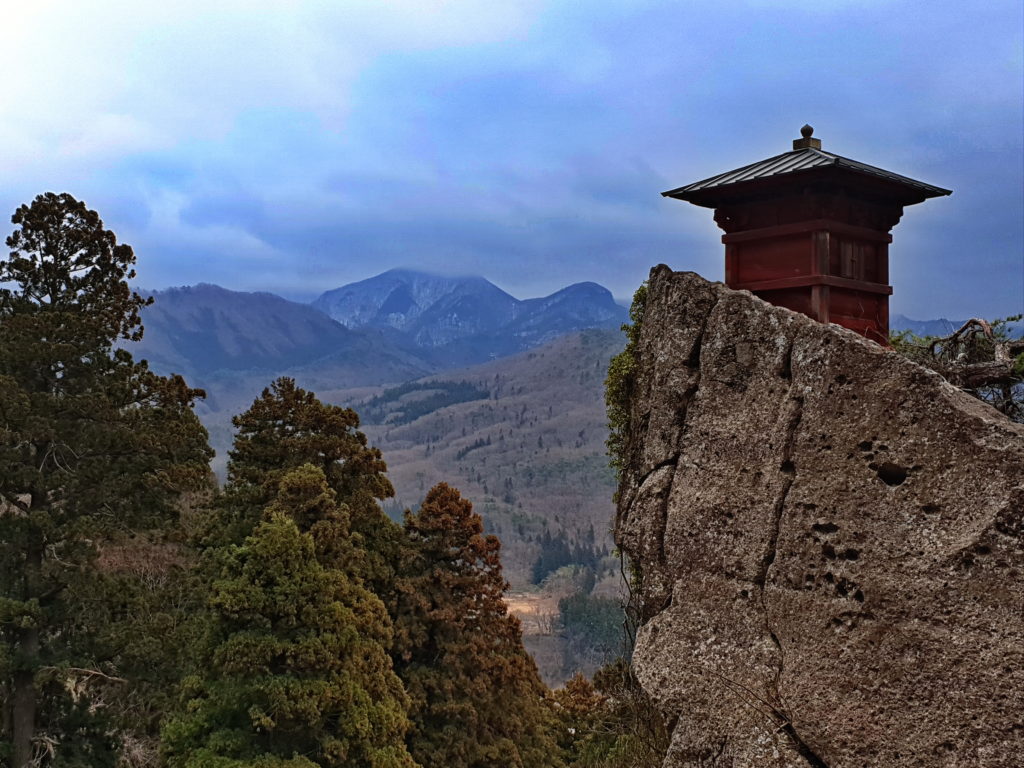
Nevertheless, the view at the top was worth the climb, especially after seeing the many tombstones and stone memorials on the way up. Visitors can enjoy the distant mountains and the deep valley at a few viewing platforms. If you telescope your eyes further, you can see a row of mountains where the glistening patches of snow on their slopes made them look like shiny fish scales.

Matsuhima Bay
Matsuhima Bay is considered one of the three most scenic locations in Japan. The most attractive view is from afar, not in the middle of it. When you are in the thick of the centre, like in a cruise around the bay of 200 plus islands, you have no perspective of the entire place —a good metaphor for life in general, particularly for those who live sheltered peaceful lives and yet lament incessantly about their wretchedness. The boat passed by mostly small islands with pine trees as described in tourist brochures, but it was quite a monotonous 30-minutes tour. The walk along the coast was better, with good views of the calm and serene bay dotted with islands and boats, particularly from the quaint Godaido Temple by the shore.

For a birds-eye view of the bay, we walked about 20 minutes up a hill to the Saigyou Modoshino Matsu-park, where a strategically located café offers visitors a grand view while sipping on coffee and sweet pie.

Cherry blossom in Tokyo
When we arrived back in Tokyo, cherry blossom was in season, and it was lovely not just to see them in parks but along ordinary streets.

The best places to view cherry blossom in Tokyo is of course in one of the many beautiful parks. We have not been to all, but the Rikugien Gardens certainly count as a top spot. Even without the bloom of cherry trees, a walk here every day is balm for the soul. For those steeped in classical poetry, you can also look out for spots that emulate 88 scenes from famous Japanese poems. Rikugien translated means Garden of the six principles, referring to the categories of Chinese poetry on which a kind of Japanese poetry is based. Six seems like a preferred scholarly number in Japan as Kenrokuen, the famous garden we visited in Kanazawa also shares the same prefix, though it was about landscape, not poetry. Not being remotely familiar with the art of Japanese poetry, I am satisfied enough to immerse in the lush beauty of this three-dimensional painting.
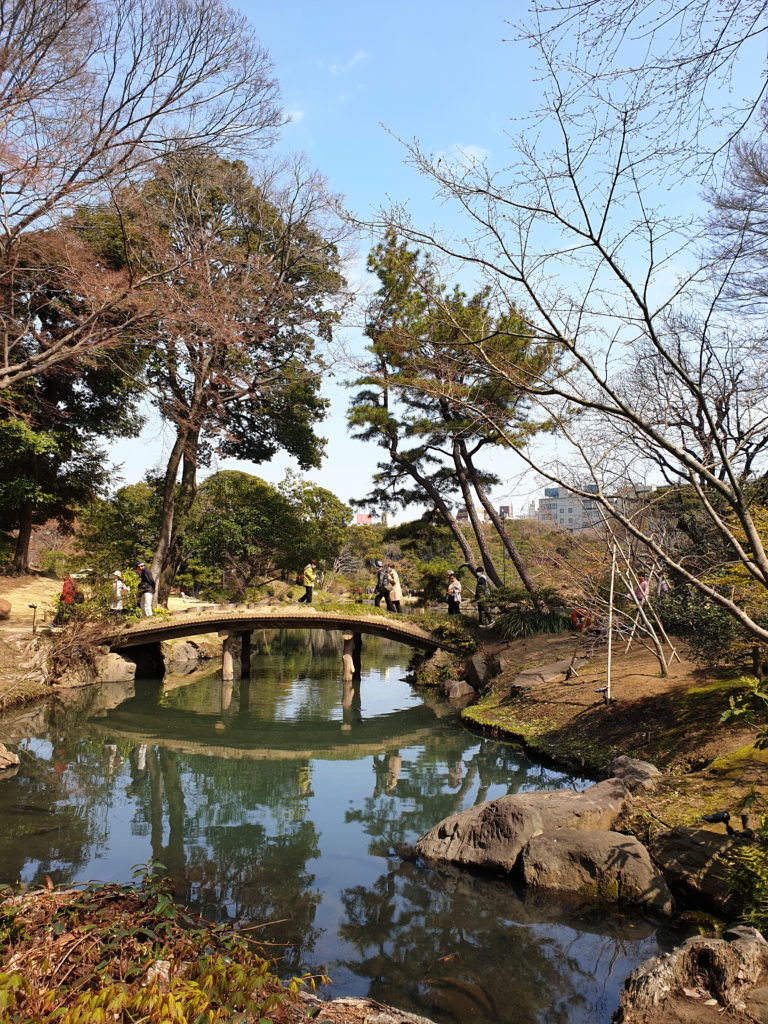
Another well-known spot for enjoying cherry blossom is the Shinjuku Gyoen National Park. Occupying an area of 58 hectares (about 81 soccer fields) in the heart of bustling Tokyo, it is purported to have more than one thousand cherry trees of different varieties. On the morning we were there, it was filled with revellers enjoying the glorious sun-soaked landscape. All the good spots under the foliage of cherry trees were occupied by people indulging in hanami, the traditional Japanese practice of “flower viewing” in springtime.
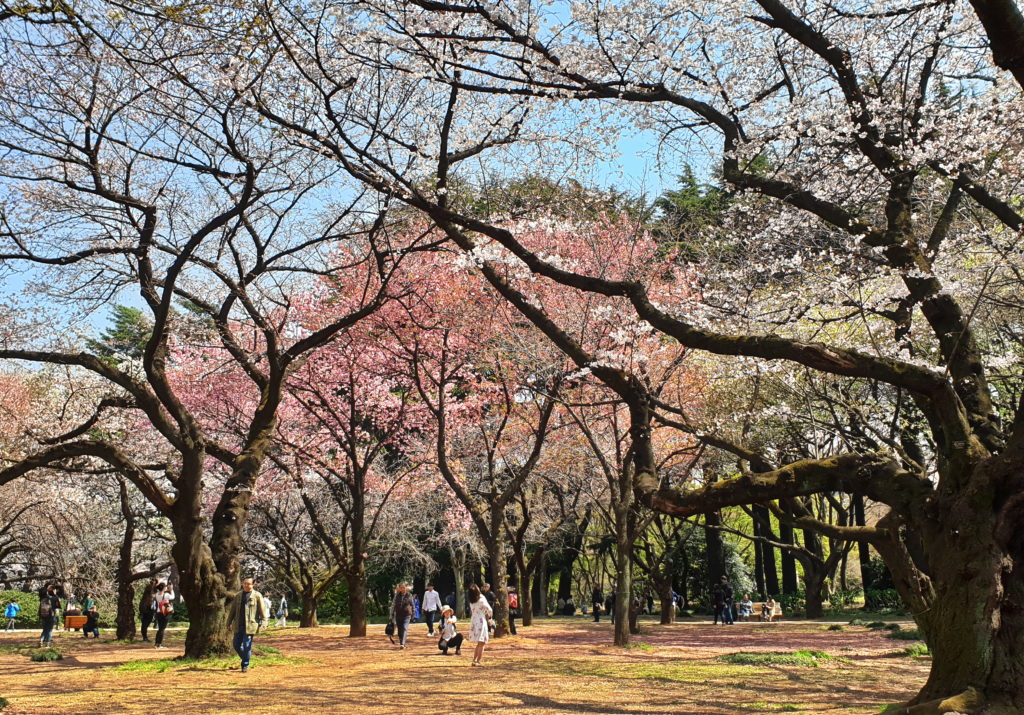
Hanami and other Japanese ideas
Hanami is one of those seemingly simple Japanese ideas or practice that can lead to profound changes in the way we live our lives—if you allow it. The Japanese seem to have a knack of expressing simple life lessons in one or two words. For example,
- wabi-sabi (appreciating beauty in imperfection – see blog no.1)
- kodawari (attention to detail),
- kintsugi (joining back broken pieces with gold),
- mottainai (make do with what you have) and
- tsundoku (buying books and not finish reading them – yes, apparently there is merit in this too)
Back to hanami—you gaze at cherry flowers, singly, or the lacy canopy that covers your view towards the blue sky, and contemplates the fleeting beauty they evoke, for they will be gone in not so many days. Hanami reminds us that beauty (or anything that make us happy) is not a permanent state, it dissipates with time but in so doing, define the very essence of beauty (or happiness). But it will come back again next year, giving us hope and reminding us to be more generous, compassionate and grateful in our daily encounters in the delicate dance of life.

A view to remember
Finally, a fitting end to this Japanese chronicle—a picture of Kairakuen Garden in Mito, two-hour train ride from Tokyo. This is another of the 3 most beautiful gardens in Japan, and it is no exaggeration! Kairakuen epitomizes all that I find attractive about Japanese gardens—the spontaneous simplicity, yet sophisticated and unobtrusive quality that convey elegance, tinkling freshness and tranquillity to all who walk in it.
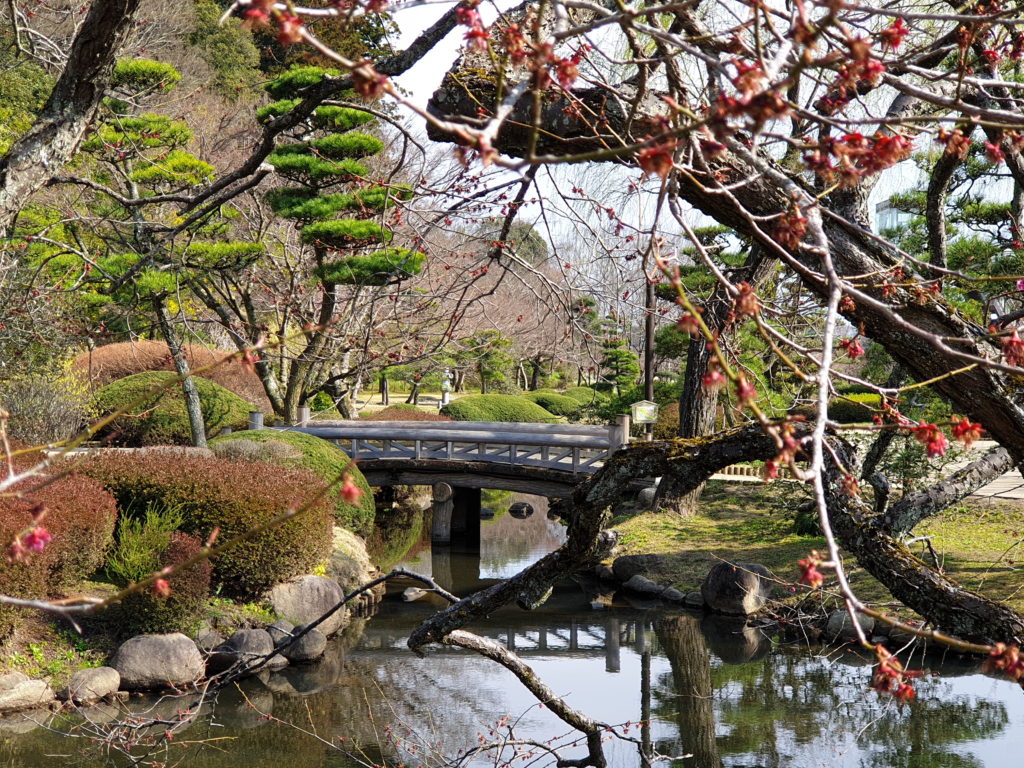
Japan is a fascinating place to visit. Its superb rail and transportation network makes it very convenient to tour the country from one end to the other. Language was less of a problem than I thought as one can usually make do with hand gestures and simple Japanese or English. Moreover, signboards have Chinese characters in Kanji which give us the comforting illusion that we are on familiar ground.
Only by travelling in Japan do we experience the overwhelming politeness, civility and beauty, which is so at odds with the image of Japan in the last World War that I grew up with. They might as well be two different countries. To be fair, the same can be said of any country with a long enough history. Ironically, Japanese culture has a lot to teach us how to live a good life, and maybe that is what we should focus on.
2 thoughts on “Kiso valley to Kairakuen: The rest of my Japan trip”
Beautiful photography again Choy. And I learned that very useful Japanese word”tsundoku”. Of which I have been guilty most of my life!
Thanks Isabella,
I learned that tsundoku is a positive trait! See this article by Kevin Dickinson, “The value of owning more books than you can read” from the Big Think website,
https://bigthink.com/personal-growth/do-i-own-too-many-books?rebelltitem=1#rebelltitem1
So, continue to pile up your books without guilt!